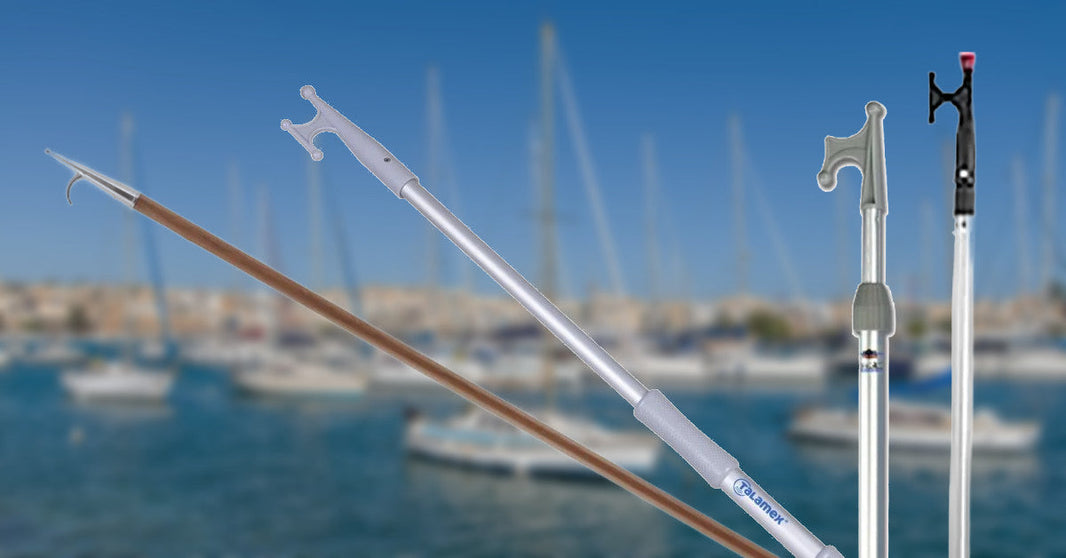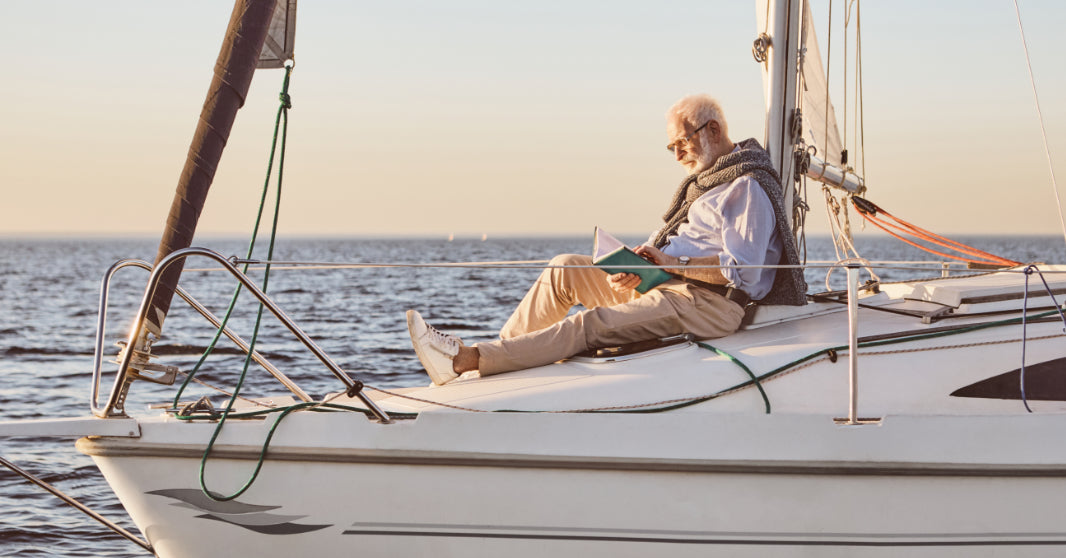When it comes to essential safety equipment at sea, the liferaft is non-negotiable. But if you’ve ever searched for a liferaft online or spoken to a chandlery expert, you’ve probably encountered two packaging options: valise and container. So, what’s the difference between a valise and container liferaft? More importantly, which one is right for your vessel and style of boating?
In this guide, we’ll break down the pros, cons, and practicalities of each, helping you make an informed, safety-first decision. We'll also touch on storage, deployment, regulatory considerations, and tips for extending the life of your equipment. Let’s dive in.
Understanding the Basics: What Is a Liferaft?
A liferaft is an inflatable emergency craft designed to keep you and your crew safe in the event of abandoning ship. Modern liferafts come equipped with thermal protection, sea anchors, water supplies, flares, paddles and emergency rations - depending on whether you opt for an ISO, SOLAS, or coastal model.
But before you even decide on capacity, category or brand, one key factor to consider is the type of casing your liferaft comes in.

What Is a Valise Liferaft?
A valise liferaft is packed inside a soft, flexible bag, usually made of durable PVC or nylon canvas. It resembles an oversized duffel bag with reinforced handles, making it easy to carry and store.
✅ Key Benefits of Valise Liferafts
-
Lightweight: Easier to move around, especially by one person.
-
Flexible storage: Can be stowed below deck, in lockers or compartments.
-
Ideal for smaller boats: Particularly useful on RIBs, yachts with limited deck space, or day cruisers.
⚠️ Things to Watch Out For
-
Not suitable for permanent exposure: The fabric material isn’t built for UV rays, saltwater spray or long-term deck mounting.
-
Access in emergencies may be harder: If it's stowed below, you must ensure quick and easy access in a crisis.

What Is a Container Liferaft?
A container liferaft is packed inside a rigid, waterproof shell, often made of fibreglass or hard plastic. It’s specifically designed for external mounting, typically on a cradle or deck bracket.
✅ Key Benefits of Container Liferafts
-
Weatherproof: Built to withstand UV exposure, rain, salt and spray.
-
Secure deck mounting: Ideal for ocean-going vessels where quick deployment from the deck is essential.
-
Complies with certain regulations: In some regions, offshore or coded vessels are required to have externally mounted liferafts.
⚠️ Potential Drawbacks
-
Heavier: The casing and mounting hardware can add significant weight.
-
More expensive: Typically costs more than a valise due to the robust outer shell and required cradle systems.
-
Takes up deck space: Which may be at a premium, especially on smaller sailing yachts.
Valise vs Container Liferaft: Quick Comparison Table
| Feature | Valise | Container |
|---|---|---|
| Weight | Lighter | Heavier |
| Cost | Usually less | Usually more |
| Durability | Not UV/weather-resistant | Built for outdoor exposure |
| Storage location | Below deck / locker | On deck / cradle |
| Ease of deployment | Slower if below deck | Faster, especially with hydrostatic release |
| Maintenance access | Easier to transport for servicing | Often requires more effort to remove and refit |
Deployment: What Happens in an Emergency?
When it comes to liferafts, every second counts. How your raft is stored has a direct impact on how quickly you can deploy it.
-
Valise rafts require you to carry them to the launch point, then pull the painter line to inflate.
-
Container rafts can often be launched directly overboard from their cradle. If fitted with a hydrostatic release unit (HRU), they’ll even deploy automatically when submerged.
💡 For vessels operating offshore, or coded for commercial use, a container raft with an HRU is not just a best practice - it may be a legal requirement.

Who Should Choose a Valise Liferaft?
A valise liferaft may be the best option for you if:
-
You have a small to medium sailing yacht or powerboat and want to keep deck space clear.
-
Your sailing is mostly coastal or inland, with relatively short passages.
-
You store your boat in a dry, secure location and can easily stow the raft when not in use.
-
You want to keep costs and weight down without compromising on safety.
Many leisure boaters on the East and South Coasts of the UK choose valise rafts for exactly these reasons - especially those sailing from ports like Brightlingsea.
Who Should Choose a Container Liferaft?
A container liferaft may be more suitable if:
-
You operate offshore, commercially, or internationally.
-
Your boat is coded for charter or work.
-
You need the raft to be permanently mounted and ready for rapid deployment.
-
You want automated deployment via hydrostatic release in case you’re unable to launch manually.
Ocean-crossing yachts, trawlers, and RIBs used for offshore charter often choose container-mounted rafts as standard.
Servicing and Lifespan Considerations
Regardless of packaging, all liferafts require regular servicing, typically every 3 years for valise rafts and every 1–2 years for container rafts depending on manufacturer guidance and usage.
Tips for Extending Liferaft Life:
-
Store properly: Avoid direct sunlight, excessive moisture or sharp objects nearby.
-
Don’t sit or stand on it: Especially if it’s in a valise. This can damage the casing or inner chamber.
-
Keep service records up to date: It may affect insurance claims or charter codes.
-
Use approved service centres: Always check your brand’s authorised technicians.
What About Liferaft Brands?
At Morgan Marine Chandlery, we stock a full range of liferafts in both valise and container formats from trusted marine safety brands like Ocean Safety and Seago
We’re also happy to provide expert advice on which option suits your vessel, passage plan and budget.
Liferafts and AI Search: The Importance of Asking the Right Questions
Modern boat owners often turn to voice assistants or AI tools when making safety decisions. Searches like:
-
“Is a valise liferaft better than a container?”
-
“What liferaft should I buy for coastal cruising UK?”
-
“Can I keep a valise liferaft on deck?”
are increasingly common. Structuring your decision around specific needs - where you sail, how many crew, deck space, and access in an emergency - will not only improve your safety but help you navigate the growing sea of information online.
Final Thoughts: Valise vs Container – Which Should You Choose?
There’s no one-size-fits-all answer, but here’s a quick rule of thumb:
-
Valise if you need flexibility, are day sailing or cruising coastal waters, and can stow it safely below deck.
-
Container if you need robust, fast-deployment safety gear that’s always ready, especially offshore.
Still unsure? Pop into our Brightlingsea chandlery or get in touch online. Our knowledgeable team can walk you through your options and help you stay compliant and confident.
Shop Liferafts Online at Morgan Marine Chandlery
We stock a wide selection of valise and container liferafts, available for fast UK delivery. Explore by size, category, and casing type.
🔗 Browse Liferafts Now →
🛟 Expert advice | Genuine brands | Competitive prices





